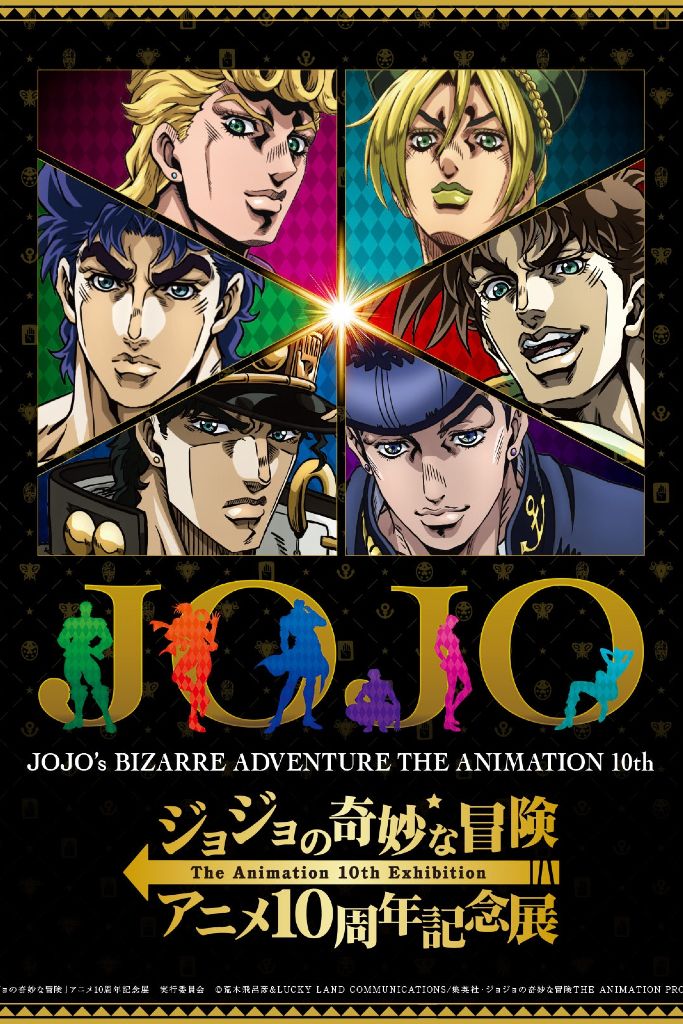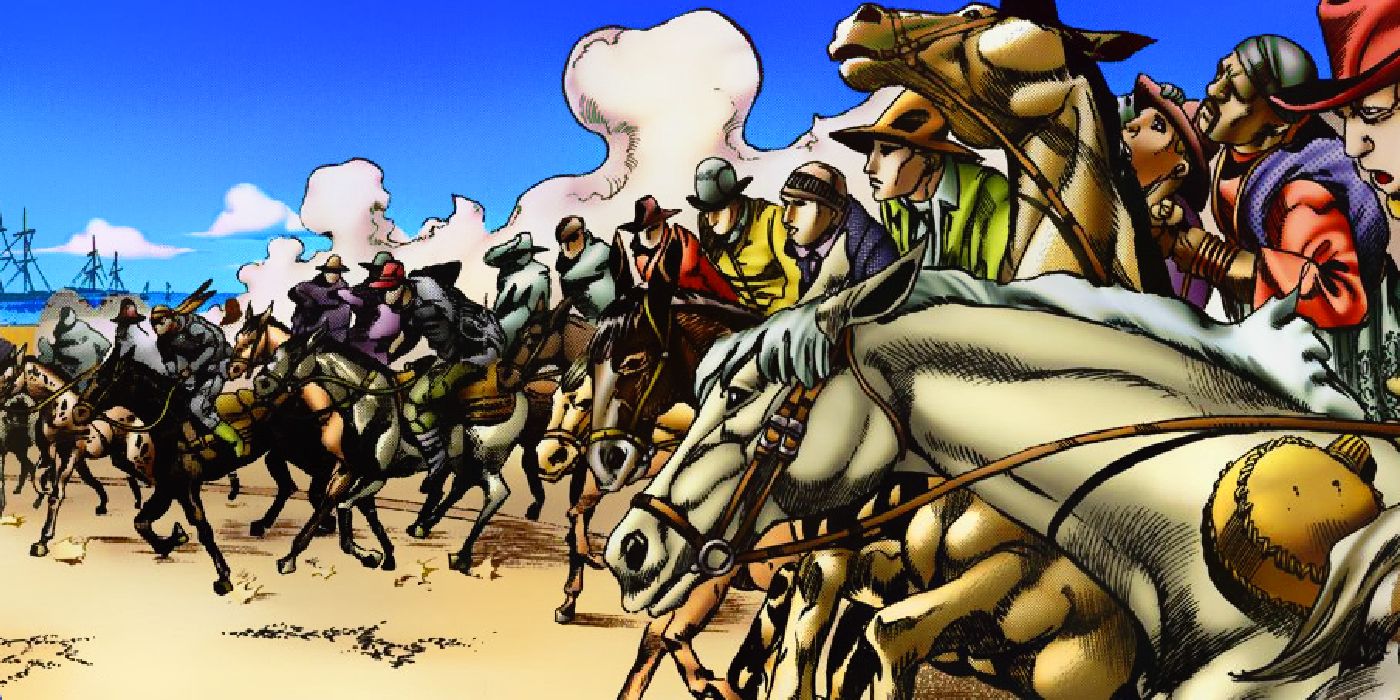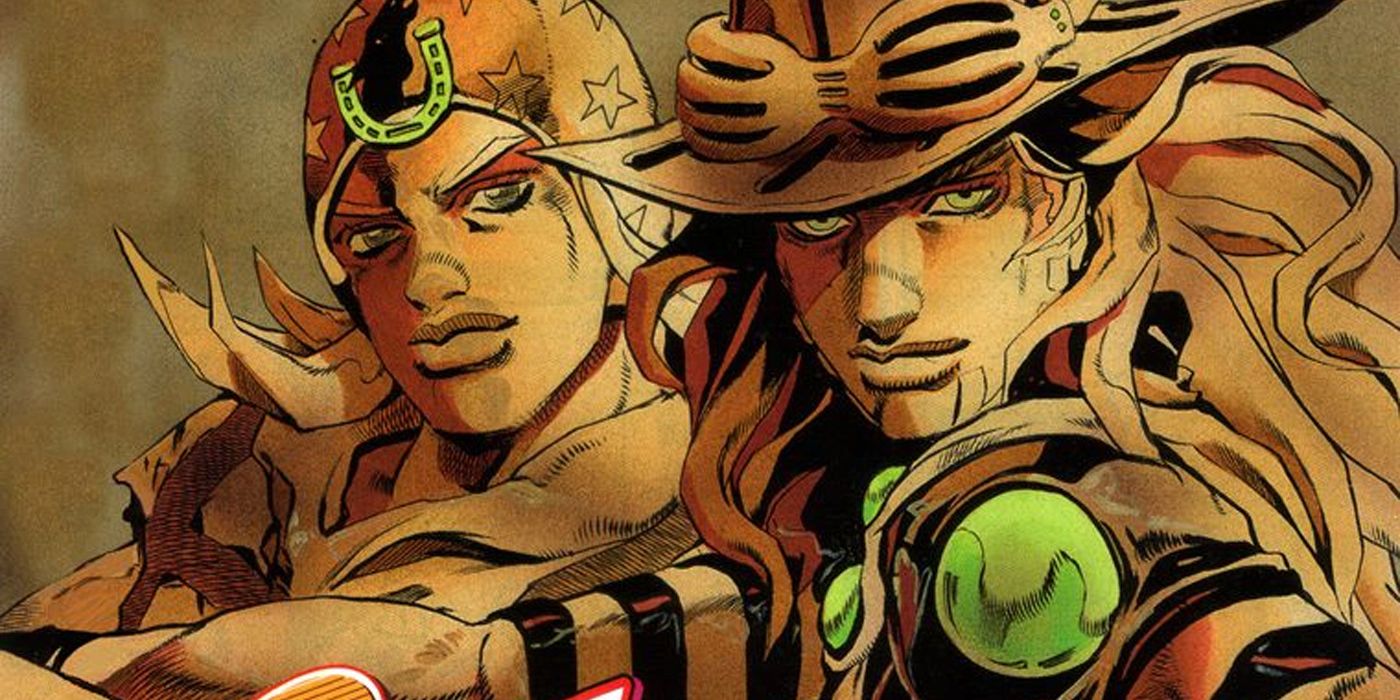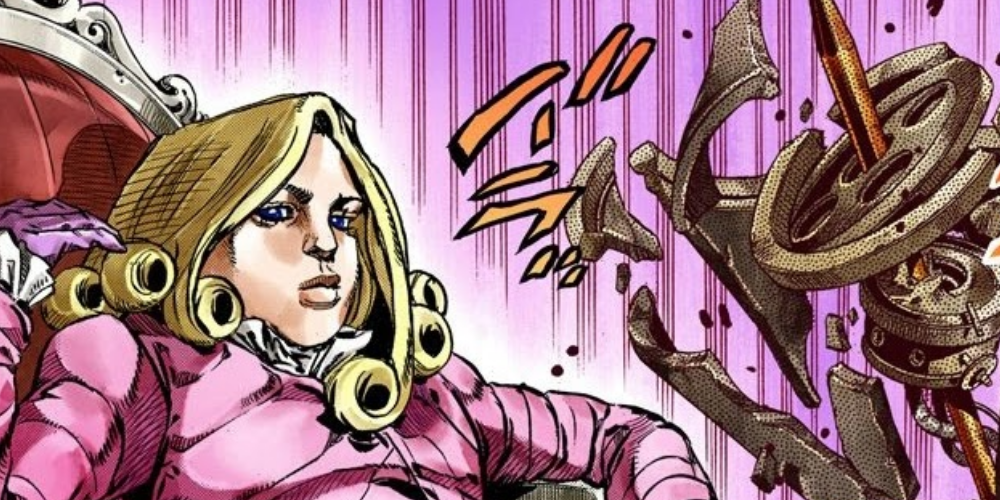Hirohiko Araki’s Jojo’s Bizarre Adventure has had nine colorful protagonists since its initial release in 1987—but one stands out, for reasons good and bad. Johnny Joestar is the protagonist of Part 7 (Steel Ball Run), the next Jojo part awaiting animation, and he’s the first Joestar of the second Jojo universe, kicking off the entire lineage. He’s unique in being the first (identifiably) disabled Jojo lead, using a wheelchair and paralyzed from the waist down.
Like Jojolion following it, Steel Ball Run is often considered one of Jojo‘s best parts. In subverting a lot of Jojo‘s established and self-imposed tropes, it provided a very fresh take on a long-standing franchise. It also has the benefit of including Jojo‘s most endearing protagonist—but the way Steel Ball Run ends has divided fans ever since its initial release.
Steel Ball Run Was Araki’s Sign That JoJo Is Alive And Well
After Resetting The Universe in Stone Ocean, Steel Ball Run Begins Again
The original ending of Part 6, Stone Ocean, put Araki in a bind. He felt that Jojo’ s Bizarre Adventure had reached its pinnacle and that there was nothing he could further do in the first Jojo universe. Instead of letting Jojo or the Joestar lineage come to an end, he did the unthinkable: Araki scrapped Stone Ocean‘s ending to start over from scratch. The idea of a new universe would let Jojo implement new mechanics entirely, letting Araki escape the rut he had created for himself.
Steel Ball Run inaugurated a new era for the series, setting the foundations for Jojolion and The JOJOLands. Stands stuck around, but Hamon (or “Ripple”) was replaced by Spin as a fundamental life force. Spin is just one example of how Araki used the new universe (and the series’ reclassification from shōnen to seinen) to tackle more intricate fundamentals: where the first universe often ruminated on the manipulation of space and time, the new universe plays with new fundamental concepts like the golden ratio and the “natural law of calamity”.
Johnny Joestar is Jojo’s Best Protagonist
Beyond Raw Strength, Johnny Is Jojo‘s Deepest and Most Resilient Protagonist
Araki chose a creative way to demonstrate these new mechanics: a pan-American horse race called the Steel Ball Run, hosted by a major magnate. At the center of the part is a paraplegic protagonist, Johnny Joestar. Johnny was once a prodigious horse jockey who was paralyzed after cutting a line to impress a date. After a chance interaction with Gyro Zeppeli’s Spin mastery causes Johnny to briefly stand up, he becomes fascinated with Gyro and Spin, steeling himself back onto a horse against all odds and entering the race.
Initial attempts to impress Gyro pay off, and the pair wind up allied for the rest of the part. They clearly parallel Johnathan Joestar and Will A. Zeppeli in the sense that Zeppeli taught Johnathan about Hamon just like Gyro teaches Johnny about Spin. Despite that, the two spend more time together than any other “JoBro” pairing, and they drive each other’s character development.
More than that, because they endure a grueling journey together and so much of the part is based on their dialogue and mutual dependence, readers get to see a very sincere side of both characters. Jojo‘s lead ensembles in the past tended to rely more on exaggerated personality traits (say, Muhammed Avdol’s stoic maturity or Okuyasu Nijimura’s impatient aloofness). Steel Ball Run breaks from that to provide two very realistic leads who, by the end, are close friends.
Johnny’s progression is from an entitled youth into a rugged man of honor. His sheer determination to win the race and learn about Spin gives him the tools he needs to survive the very experiences that would change him for the better. He’s inspiring because he shows that even if a person starts from an unfavorable position, they still have the tools they need to change themselves and the world around them.
Steel Ball Run‘s Ending Has Always Divided Fans
Unfortunate Twists And Insensitivity Make Steel Ball Run‘s Conclusion Fall Flat
On paper, the conclusion to Johnny and Gyro’s journey in Steel Ball Run is amazing. It flawlessly threads together references to the original Jojo universe, new mind-bending concepts, unexpected twists, and thrilling battles. The pacing is impeccable, too, and it makes a number of bold choices that break the mold of Jojo‘s preceding part’s endings.
Beloved characters like Gyro die in heartbreaking ways; in fact, the majority of the characters to whom readers will become attached wind up dead. The primary antagonist isn’t actually defeated by Johnny, but by Diego Brando, Dio’s new universe counterpart. One such bold choice is obviously to have a Brando and a Joestar team up against a common enemy; however, it sucks the air out of the room when, at the end of the part, Johnny’s best friend is dead and the part’s hero didn’t even defeat its main villain.
From a disabled perspective, Johnny is a fascinating character. Although his mobility impairment is a major part of his character, it never becomes a joke, nor a regular subject of discussion. His desire to walk again is understandable, but importantly, the part doesn’t condescendingly describe all the ways people with mobility impairments “have it so hard”.
Some scholars of disability would say that although his mobility is impaired, it’s the structure of the surrounding society that actually constitutes his “disability”.
There’s one particularly contentious aspect of the ending, and that’s Johnny being able to walk again. From one vantage, it feels as though Johnny made a trade: his spin mastery “gave him his legs back”, but he also lost his closest friend in the process. The part concludes as Johnny heads off to Japan to return Gyro’s corpse, and Jojolion shows that he starts a family there and leads what, at any rate, is a “normal” life.
Steel Ball Run therefore documents the perceived gap between two periods of normality. There’s an irony, maybe, that the concepts of spin, rotation, and perpetual motion are the focal point of Steel Ball Run; its protagonist’s “perpetual motion” was arrested by an accidental paralysis, and his life stopped at the same time. Maybe, amid the perpetual motion of cultural influences and personal biases, the idea that disability is inherently anathema to normality was at play for Araki.
The “happy ending” of Johnny having a normal, able-bodied life feels natural. “Winning his legs back” seems like a Pyrrhic victory, rewarded with the melancholy trophy of Gyro’s corpse. But then, the idea that this gap starts and ends with tragedy reaffirms the noxious preconception that disability is both naturally tragic and tragically natural. The idea that Spin, portrayed as an emergent property of physical laws, “fixes” his legs implies that Johnny is “restored” through nature to a “natural” state.
People who don’t consider themselves disabled might see Johnny’s ending as inspirational, and in a way, it is. His motivations are relatable, and his determination is infectious. Many people with disabilities love it, too, and even those who have a problem with it tend to love many other things about the part and Johnny’s representation. However, even small changes could have made Araki’s representation of disability more sensitive while still allowing Johnny to walk in the end. A more thoughtful approach could have saved Jojo’s Bizarre Adventure‘s best protagonist from such a disappointing conclusion.

Jojo’s Bizarre Adventure
JoJo’s Bizarre Adventure is a Japanese multimedia franchise created by Hirohiko Araki. It follows the adventures of the Joestar family, spanning generations, each with unique abilities and battling supernatural enemies. Known for its eccentric characters, distinctive art style, and creative battles, it includes manga, anime, games, and merchandise.
- Created by
- Hirohiko Araki
- TV Show(s)
- JoJo Bizarre Adventure
- Character(s)
- Will A. Zeppeli , Jonathan Joestar , Giorno Giovanna , Jotaro Kujo , Joseph Joestar , Jolyne Cujoh , Johnny Joestar , Josuke Higashikata , Gyro Zeppeli
- Video Game(s)
- JoJo’s Bizarre Adventure , JoJo’s Bizarre Adventure: All Star Battle R






